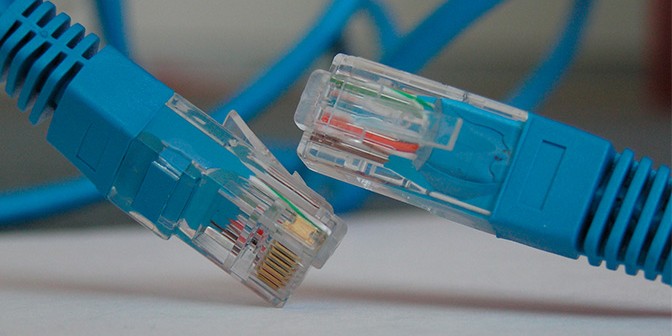What business doesn’t want more bandwidth? With businesses doing more online than ever before, the appetite for bandwidth is endless. There are 3 main areas driving the increased business bandwidth consumption: retail commerce, telecommunications, and cloud computing.
Retail commerce – Gone are the days of the traditional cash register. Today, businesses like retail stores & restaurants use networked point-of-sale systems to collect & store data. Internet connectivity is used to transmit sales information to a central computer, to query credit card providers for authorizations, or to access centrally maintained price information. Newly emerging applications enabling POS transactions to be conducted using mobile phones and tablets are also reliant on bandwidth.
Telecommunications – VoIP technology, video conferencing, and the proliferation of devices are just a few of the ways telecommunications are driving increased demand for business bandwidth. And business users, just like home users, are now connecting to the network with multiple devices, exponentially increasing the amount of bandwidth businesses require.
Cloud computing – Whether it’s connecting to servers, accessing software, or data files, growing numbers of business are realizing productivity gains and cost savings by sharing centrally stored resources which are accessed over the internet. As the number of companies reliant on cloud computing grows, so does the demand for high-quality, ultra-fast download and upload business grade bandwidth.
An Overview of Commonly Available Business Bandwidth Products
How is the growing demand for business bandwidth currently being met? A number of Internet products are marketed as high-speed internet products for business use:
Bonded DSL – Bonded DSL is the popular but technically improper term for bonded ADSL, in which copper lines with an individual upload capacity of 20 megabits per second are joined together, doubling that capacity. Data is split at the packet level before being routed simultaneously over the bonded lines at upload speeds of around 40 megabits per second. Its maximum upload capacity is just 4 megabits per second –insufficient for the business trying to push large data files to the cloud.
Ethernet over copper – Ethernet over copper uses Ethernet networking technology to transmit data over a twisted pair of copper cables. Unlike bonded ADSL, Ethernet over copper provides symmetrical transfer rates – up to 40 megabits per second download and upload speeds. In areas where fiber-backed Ethernet is unavailable, Ethernet over copper is a serviceable option for today’s data-hungry businesses, but availability is somewhat limited.
Cable modem – Cable modem is the technology cable TV providers use to distribute broadband, via the same coaxial cables that carry the cable TV signal. Cable modem is capable of delivering reasonably fast download speeds, but because the bandwidth is split at a centrally located node to be shared amongst multiple subscribers on that node, network performance can suffer when multiple subscribers place large demands on the network simultaneously. As with bonded ADSL, upload capacity is severely limited – generally only a few megabits per second and is also not adequate for business cloud applications.
The limitation of these technologies is due to the physical properties of the transmission medium – copper. The bandwidth that can be achieved on copper is a mere fraction of that possible on a single strand of optical fiber. When bundled together in fiber optic cables, the bandwidth potential seems almost limitless.
Fiber Optic Cable – Fiber optic cable effectively removes bandwidth speed barriers and is capable of multiple Gigabit download and upload speeds. Limited or metered bandwidth is a thing of the past, and the cost per megabit decreases due to the capacity of the fiber cable network. What’s the catch? Because fiber optic cable has to physically enter the building, there are certain additional installation costs. However, such costs are frequently absorbed by commercial landlords looking to increase the value of their building or to attract tenants.
The principal portion of the Internet’s backbone is now made up of fiber optic cable. The sooner providers make fiber to the premises available to the communities they serve, the greater the competitive advantage gained by the businesses in those communities.
Locally-owned & located in Downtown Bend BendTel provides a complete solution for all business communications needs – from phones to fiber-backed Metro Area Ethernet.
541-389-4020
www.BendTel.com




